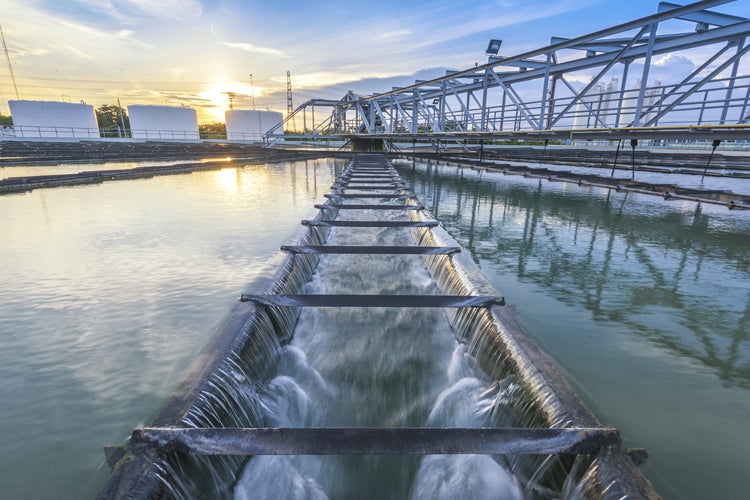
Photo: People Image Studio | Shutterstock
This World Water Day, the Private Infrastructure Development Group (PIDG) is celebrating the success of the Kigali Bulk Water Project in Rwanda’s capital.
The large-scale water treatment plant, due for completion in 2020, will produce 40 megaliters of clean water per day, equivalent to one-third of Kigali's total supply. Water will be drawn from the Nyabarongo River to be treated before distributing a clean supply to up to 500,000 domestic, commercial, and industrial customers. Kigali Water is one of the first water projects to be developed using a public-private partnership (PPP) model in sub-Saharan Africa.
Three PIDG companies—The Emerging Africa Infrastructure Fund (EAIF), the Technical Assistance Facility (TAF), and DevCo—helped to finance the project at different stages of its development. Having previously backed Rwanda’s ground-breaking Gigawatt Solar and Kivu Watt, PIDG company EAIF was well-placed to arrange long-term finance to support developer Metito, a global provider of water management solutions with 60 years’ experience developing and managing water facilities in emerging markets.
If we are to achieve Sustainable Development Goal 6, universal access to safe drinking water, we need to see many more similar projects come to fruition across low-income countries in sub-Saharan Africa and Asia .
Below are four key lessons learned that can help build on Kigali’s success.
Coordinated blended finance
Kigali Water benefited from a well-coordinated package of blended finance. EAIF led the arrangement of financing for the US$61 million plant, providing a US$40 million, 18-year-long term loan jointly with the African Development Bank and securing investment from other PIDG companies to galvanize a development, which otherwise may not have succeeded. DevCo—the specialist PPP advisory facility operating through PIDG and implemented by IFC—provided funding to help structure the transaction and its competitive tender. TAF granted US$6.5 million in crucial viability gap funding to reduce up-front costs and allow the government to expand the number of people connected to a reliable water supply without raising tariffs. 150,000 customers are expected to benefit in the first phase. This combined support gave developer Metito and the Rwandan Government the necessary assurance and security to proceed with an innovative plan that was affordable for all parties, including end users .
Focused on impact
The original scope of the project included distribution infrastructure such as pumping stations, reservoirs and piping, which would be vital to realizing its full impact. But during development it was discovered that it would be more efficient for the municipal utility to deliver part of this infrastructure. An agreement was reached between Metito and the government to split the construction of the production and distribution infrastructure, delivering the latter through Rwanda’s water utility WASAC, supported by a separate financing package from the Government of Rwanda and the African Development Bank. By considering water production and distribution holistically, and finding pragmatic financing solutions, the project retained key elements that will benefit users in surrounding communities.
Communication is key
It may seem overly simplistic, but clear communication between stakeholders was essential. Regular in-country meetings between the government, lenders and developers helped steer an inclusive, consultative path through delicate PPP negotiations. Having a strong team on the ground enabled partners to anticipate and mitigate issues in consultation with the developer and government.
Demonstrating what’s possible
Currently we are not seeing the necessary levels of commercial finance in water sanitation development where it is most needed. Multilateral finance institutions like PIDG play a trailblazing, risk-reducing role in the sector, demonstrating what is possible and encouraging the private sector to invest in similar schemes with their partners in governments .
It is my hope that learning from Kigali Water will help more countries get closer to achieving SDG 6 on future World Water Days.
You can read more about the project here.
Emilio Cattaneo is Executive Director of the Emerging Africa Infrastructure Fund (EAIF), part of the Private Infrastructure Development Group (PIDG). PIDG is a multi-donor organization with members from seven countries (Australia, Germany, the Netherlands, Norway, Sweden, Switzerland, the UK) and the World Bank Group’s International Finance Corporation through its specialist PPP advisory facility DevCo.
Disclaimer: The content of this blog does not necessarily reflect the views of the World Bank Group, its Board of Executive Directors, staff or the governments it represents. The World Bank Group does not guarantee the accuracy of the data, findings, or analysis in this post.
Additional Resources:
PPIAF Helps the Government of Rwanda Manage Private Sector Participation in the Water Sector
IFC - Rwanda: Kigali Bulk Water Project
Related posts:
Water PPPs that work: The case of Armenia
5 trends in public-private partnerships in water supply and sanitation
PPP-powered access to water — and much more


Join the Conversation